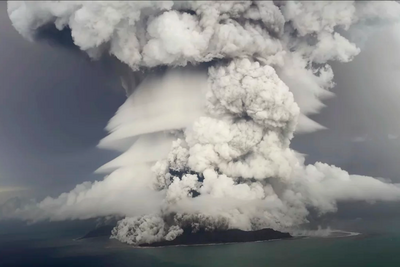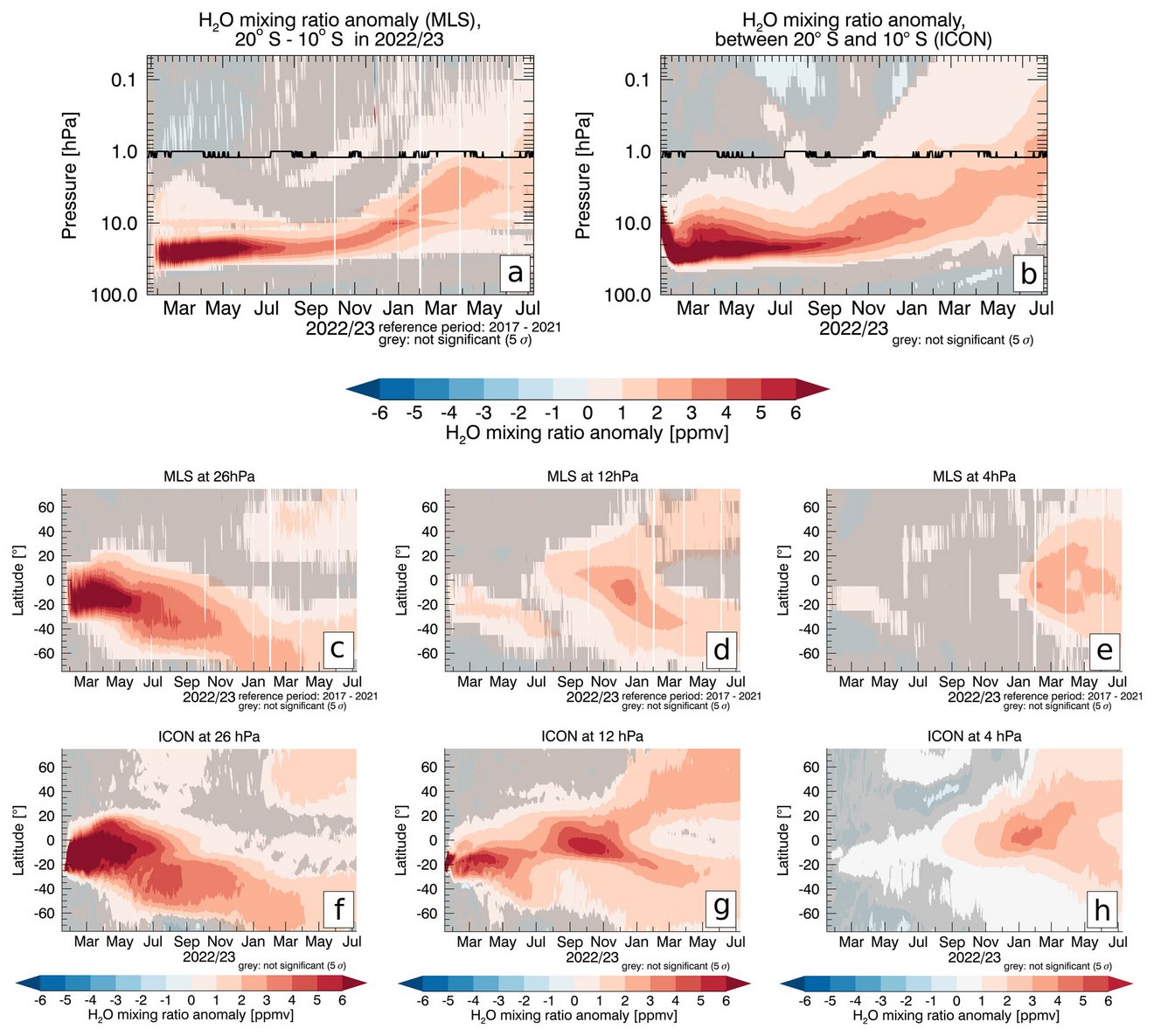How a volcanic water vapor cloud influences its own transport through the stratosphere

The massive eruption of the submarine volcano Hunga Tonga-Hunga Ha'apai in January 2022 changed the water vapor content of the stratosphere. The eruption injected about 150 Tg of water vapor (H2O), about 10% of the total stratospheric H2O content, to altitudes above 50 km. The cloud showed a rapid descent from the initial injection height of about 50 km to an altitude range of 22–27 km during the first weeks after the eruption. Therefore, the authors studied the spatial evolution of the volcanic H2O cloud over a period of about one and a half years in two ways: They analyzed H2O mixing ratio observations provided by the Microwave Limb Sounder (MLS) instrument onboard the Aura satellite and simulated the transport of the H2O cloud using the ICON model. The authors were particularly interested in whether the water vapor cloud itself influences its transport.
The simulated spatial evolution of the H2O cloud is very close to the MLS observations. In both cases, the vertical transport of the H2O cloud had three phases: an initial subsidence phase, a stable phase, and a rising phase. The authors showed that radiative cooling of the H2O clearly affects the transport of the H2O cloud and is the main driver within the subsidence phase. Radiative cooling also counteracts the large-scale rising motion in the tropics, leading to the stable phase, and modulates the large-scale transport of the H2O cloud for about nine months. This behavior of the cloud is mainly caused by radiative cooling due to infrared emission from water vapor: the temperature inside the H2O cloud is lower than outside the cloud. The authors also investigate the extent to which the transport is influenced by other factors, such as the wind system Quasi-Biennial Oscillation (QBO). The close agreement with observations shows that the model simulates many aspects of the H2O cloud evolution very well, the radiative cooling and the related cloud microphysics, the meridional transport towards the poles and the phases of the QBO.
This study is the first scientific application of a new ICON model configuration being developed jointly with the German Weather Service for use in Extended Predictions and Projections (XPP). ICON was used in a coarse horizontal resolution version (160 km) of the numerical weather prediction (NWP) configuration of the ICON atmosphere model, where the land model and the vertical diffusion scheme of the NWP configuration are replaced by the JSBACH model. The simulations were performed with a newly designed vertical grid with a maximum vertical resolution of 500 m in the stratosphere. This study allowed to see the performance of the stratospheric dynamics in a free-running, non-nudged version of this model.

Original publication
Niemeier, U., Wallis, S., Timmreck, C., van Pham, T., & von Savigny, C. (2023). How the Hunga Tonga—Hunga Ha'apai water vapor cloud impacts its transport through the stratosphere: Dynamical and radiative effects. Geophysical Research Letters, 50, e2023GL106482. https://doi.org/10.1029/2023GL106482
Contact
Dr. Ulrike Niemeier
Max Planck Institute for Meteorology
ulrike.niemeier@mpimet.mpg.de
